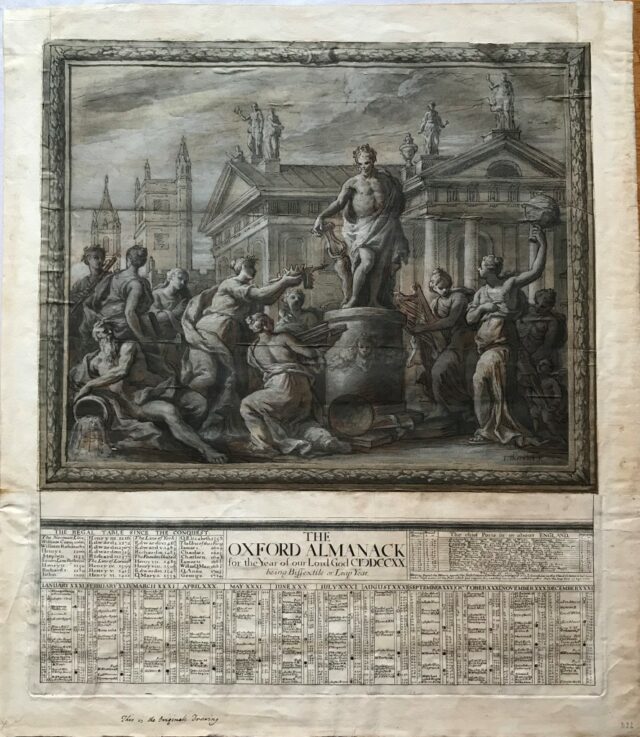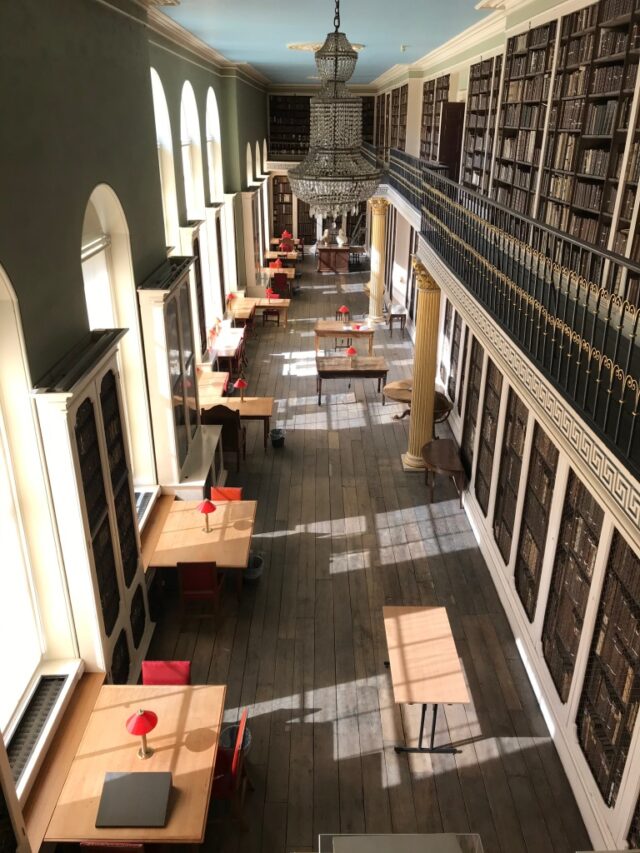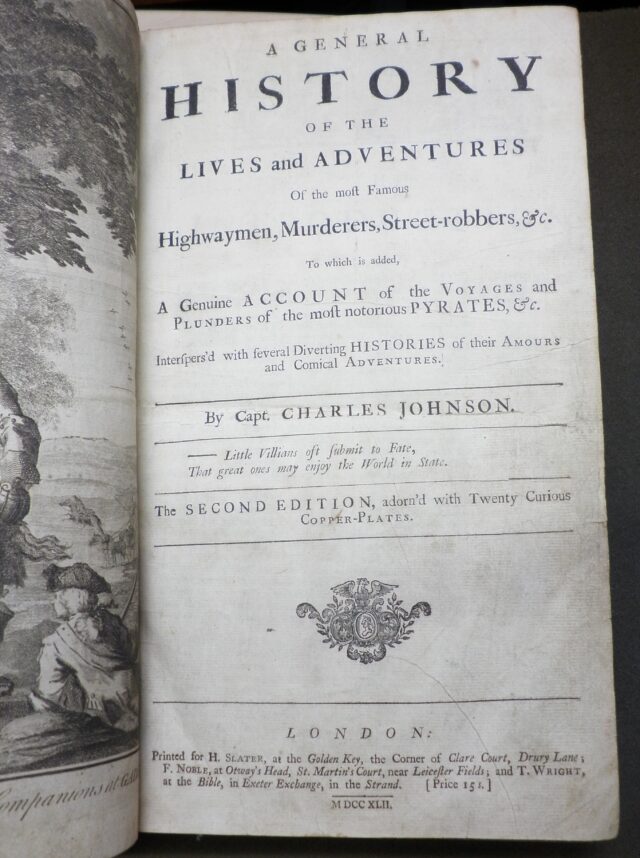‘omnia scripta statum collegii concernentia’

21st April 2017
‘omnia scripta statum collegii concernentia’
Key to the College Chest, c1714
Muniment Room list, 1909
In contrast to the many interesting volumes from the College Library which have featured in recent months, we return to treasures from the Archives with an object containing only two words of text: “College Chest”. This object can help to unlock the history of the Archives themselves, and to provide an explanation for the separation between the Archive collections and the special collections in the Library. To bring the story of the Archives to the present day, I have also included a second treasure that sheds further light on the history of the collections.

Key to the College Chest, c1714, with label in Provost Gower’s hand
This large key is all that remains of the two chests which the original College Statutes of 1714 stipulated were to be maintained by the College authorities. The first chest was to contain “omnia scripta statum collegii concernentia” [all documents concerning the position of the College] and went on to list those of particular importance: the Foundation Charter; the statute book; the Founder’s will; and documents relating to gifts of land and money. ‘Lesser documents’ (“scripta minoris”) were to be safely stored elsewhere in College in a place nominated by the Provost and Bursar. The second chest was provided for money and the more precious items of College silver and plate. The statutes required the two chests to be made of iron or other strong material, and to need three keys to unlock them, thereby preventing one unscrupulous individual from making off with the College treasures. The keys were to be held by the Provost, the Bursar and the Dean and it appears that this surviving key was the one held by the Provost as the writing on the label is that of the second Provost, William Gower (Provost 1736 to 1777); Daniel and Barker’s history of the College records that this system was still in use in 1900. It seems fair to argue that the order of these two chests in the 1714 Statutes is significant and that the authors recognised the greater importance of the evidential value of the documents for the future survival of the College. The survival of these original documents has often proved crucial to the College in various disputes over the intervening 300 years, and they are still used occasionally by the administration today.
1714 College Statutes: (clockwise from top right) a section of the front cover; title page; and the page containing the instructions for two iron chests
This provision in the 1714 Statutes for an embryonic College Archives explains their division from the Library which, while it was also established at the foundation of the College, was to provide a research collection and in particular to house the magnificent collection of books, drawings, prints and manuscripts bequeathed in 1736 by George Clarke. The College Archives grew out of the stipulation for an iron chest for documents relating to the position of the College and therefore is comprised, in the main, of the administrative records of the College from its foundation to the present day. The ‘lesser documents’ no longer required by the Bursar were originally stored physically in the Library, in the small room next to the Lower Library (now known as the Wilkinson Room), but they were not transferred to the intellectual care of the Librarian. Instead they remained the responsibility of the Bursar, and over time they became somewhat neglected. However even inclusion in the iron chest of such essential records as the ‘College Register’ (recording decisions of the body of Fellows) or other eighteenth century books of admission or benefactions did not mean that the documents were scrupulously maintained. Provost William Sheffield (Provost 1777 to 1795) in particular neglected this statutory duty – his entries in the College Register are restricted to one minute from a meeting in the first year of his Provostship, and several annotations directly criticising minutes written by his predecessor William Gower.
It was not until the twentieth century that the bursary became professionalised and steps were taken to improve the condition of the Archives. When F J Lys became Bursar in 1908 he found a collection of parcels of “dusty papers” in the small room in the Library along with the original iron chest and set to work, with the help of a clerk, sorting and indexing the Archives. The list that they created in 1909 is the second treasure of this blog post, and forms the first full archival catalogue compiled for the College.

First page of the 1909 Muniment Room list
The immediate impetus for the creation of the list was a long running dispute with the Canal Company over the drainage ditch that runs along the south side of the sports field and drains into the Canal. The organisation of the historic muniments was key to the success of the subsequent court case and once an important agreement of 1843 had been found the Canal Company capitulated. While the key to the College Chest no longer has a practical use, this second treasure, the Muniment Room list compiled by Lys and his clerk, has often helped me to track down items in the Archives which previous administrators feared were lost.

Cartoon of F. J. Lys by Ralph Usherwood (matriculated 1930)
The Archives remained intellectually separate from the Library throughout the first half of the twentieth century and were physically removed from the small Lower Library room some time before 1944 (it may be that it was at this time the original iron chest was discarded or lost). For a time they were housed in the basement of the Provost’s Lodgings, until moving to their current home when this area was redeveloped into meeting rooms.
The linking of the Archives and the Library in the minds of the administration dates from the appointment of James Campbell as Fellow Librarian in 1977. Professor Campbell was already Keeper of the Archives and the two roles came to be conflated into one title as ‘Fellow Librarian and Keeper of the Archives’. He organised the further listing of parts of the collections and ensured the transfer of newer records from the College administration, continuing the preservation of evidential records as required by the Statutes. He also acquired important collections of personal papers such as the papers of Sir John Masterman (Provost 1946 to 1961).
While it may appear at a first glance that, in comparison to the more orderly collections of the Library, the College Archives survived merely through chance and inaction until the appointment of a professional archivist in 2009, in fact these two treasures point to a long history of active preservation of these important records. We are therefore indebted to the authors of the 1714 College Statutes for their insistence that the College must securely maintain its documents in a strong iron box secured by three keys.
Emma Goodrum, Archivist
Bibliography
- Henry Daniel and W. R. Barker, Worcester College, (London, 1900)
- J. Lys, Worcester College 1882-1943, and some account of a stewardship, (Oxford, 1944)











